Chimalpopoca may refer to:
- Chimalpopoca, Aztec emperor
- Chimalpopoca (Moctezuma), son of Moctezuma Xocoyotzin
- Chimalpopoca (Tlacopan), ruler of Tlacopan
- Faustino Galicia, scholar of Nahuatl
- The Codex Chimalpopoca
Chimalpopoca may refer to:

Moctezuma I, also known as Moteuczomatzin Ilhuicamina, Huehuemoteuczoma or Montezuma I, was the second Aztec emperor and fifth king of Tenochtitlan. During his reign, the Aztec Empire was consolidated, major expansion was undertaken, and Tenochtitlan started becoming the dominant partner of the Aztec Triple Alliance. Often mistaken for his popular descendant, Moctezuma II, Moctezuma I greatly contributed to the famed Aztec Empire that thrived until Spanish arrival, and he ruled over a period of peace from 1440 to 1453. Moctezuma brought social, economical, and political reform to strengthen Aztec rule, and Tenochititlan benefited from relations with other cities.
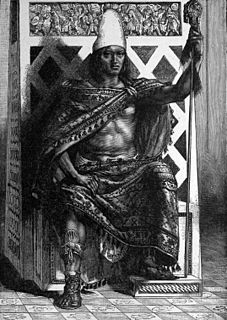
Moctezuma Xocoyotzin [moteːkʷˈsoːma ʃoːkoˈjoːtsin] modern Nahuatl pronunciation (help·info)), variant spellings include Motecuhzomatzin, Montezuma, Moteuczoma, Motecuhzoma, Motēuczōmah, Muteczuma, and referred to retroactively in European sources as Moctezuma II, was the ninth Tlatoani of Tenochtitlan and the sixth Huey Tlatoani or Emperor of the Aztec Empire, reigning from 1502 or 1503 to 1520. The first contact between the indigenous civilizations of Mesoamerica and Europeans took place during his reign, and he was killed during the initial stages of the Spanish conquest of the Aztec Empire, when conquistador Hernán Cortés and his men fought to take over the Aztec capital Tenochtitlan. During his reign, the Aztec Empire reached its greatest size. Through warfare, Moctezuma expanded the territory as far south as Xoconosco in Chiapas and the Isthmus of Tehuantepec, and incorporated the Zapotec and Yopi people into the empire. He changed the previous meritocratic system of social hierarchy and widened the divide between pipiltin (nobles) and macehualtin (commoners) by prohibiting commoners from working in the royal palaces.

Itzcoatl (1380-1440) was the fourth king of Tenochtitlan, and first Emperor of the Aztec empire ruling from 1427 to 1440, the period when the Mexica threw off the domination of the Tepanecs and laid the foundations for the eventual Aztec Empire.

Chimalpopoca or Chīmalpopōcatzin (1397–1427) was the third Emperor of Tenochtitlan (1417–1427).
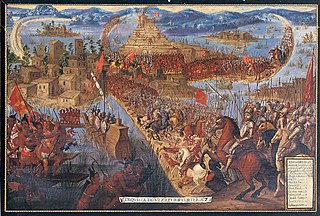
The Fall of Tenochtitlan, the capital of the Aztec Empire, was a decisive event in the Spanish conquest of the Aztec Empire. It occurred in 1521 following extensive manipulation of local factions and exploitation of pre-existing divisions by Spanish conquistador Hernán Cortés, who was aided by the support of his indigenous allies and his interpreter and companion La Malinche.

Tezozomoc Yacateteltetl, was a Tepanec leader who ruled the altepetl of Azcapotzalco from the year 1353 or Five Reed (1367) or Eight Rabbit (1370) until his death in the year Twelve Rabbit (1426). Histories written down in the early colonial period portray Tezozomoc as a military and political genius who oversaw an expansion of Tepanec influence, bringing about Azcapotzalco's dominance in the Valley of Mexico and beyond.
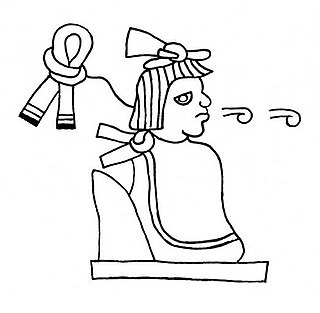
Maxtla was a Tepanec ruler (tlatoani) of Azcapotzalco from 1426 to his death in 1428.

The Aztec Empire, or the Triple Alliance, was an alliance of three Nahua altepetl city-states: Mexico-Tenochtitlan, Tetzcoco, and Tlacopan. These three city-states ruled the area in and around the Valley of Mexico from 1428 until the combined forces of the Spanish conquistadores and their native allies under Hernán Cortés defeated them in 1521.

La Noche Triste also known as La Noche Victoriosa was an important event during the Spanish conquest of the Aztec Empire, wherein Hernán Cortés, his army of Spanish conquistadors, and their native allies were driven out of the Aztec capital, Tenochtitlan.
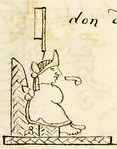
Don Diego de Alvarado Huanitzin was a 16th-century Nahua noble. A grandson of Axayacatl, Nephew of tlatoani Moctezuma II. He was initially the tlatoani (ruler) of Ecatepec before becoming tlatoani of Tenochtitlan, as well as its first governor under the colonial Spanish system of government.
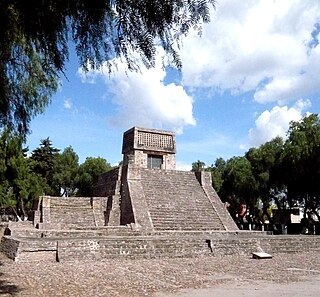
The Aztecs were a Pre-Columbian Mesoamerican people of central Mexico in the 14th, 15th, and 16th centuries. They called themselves Mēxihcah.

The Spanish conquest of the Aztec Empire, also known as the Conquest of Mexico or the Spanish-Aztec War (1519–21), was one of the primary events in the Spanish colonization of the Americas. There are multiple 16th-century narratives of the events by Spanish conquistadors, their indigenous allies, and the defeated Aztecs. It was not solely a contest between a small contingent of Spaniards defeating the Aztec Empire but rather the creation of a coalition of Spanish invaders with tributaries to the Aztecs, and most especially the Aztecs' indigenous enemies and rivals. They combined forces to defeat the Mexica of Tenochtitlan over a two-year period. For the Spanish, the expedition to Mexico was part of a project of Spanish colonization of the New World after twenty-five years of permanent Spanish settlement and further exploration in the Caribbean.

Tlacochcalcatl was an Aztec military title or rank; roughly equivalent to the modern title of General. In Aztec warfare the tlacochcalcatl was second in command only to the tlatoani and he usually lead the Aztec army into battle when the ruler was otherwise occupied. Together with the tlacateccatl (general), he was in charge of the Aztec army and undertook all military decisions and planning once the tlatoani had decided to undertake a campaign.
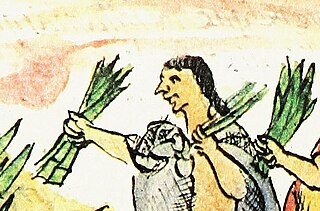
Chimalpilli I was a tlatoani (ruler) of the Aztec altepetl (city-state) of Ecatepec from 1428 until his death in 1465. He was the first known historical king of that city.
Chimalpopoca was the third tlatoani (ruler) of the Tepanec city-state of Tlacopan.
Tezozomoc was a Nahuatl male name. Bearers may refer to:
Huehue Zaca or Çaca, also Zacatzin, was a 15th-century Aztec noble, prince and a warrior who served as tlacateccatl under the ruler Moctezuma I, his brother. The name of Zaca is probably derived from Nahuatl zacatl, meaning "grass"; -tzin is an honorific or reverential suffix. Huehue is Nahuatl for "the elder", literally "old man".
Tlaltecatzin, according to some sources, was a son of the Aztec tlatoani Moctezuma II. In the Noche Triste, the Spanish took him out of Tenochtitlan as a prisoner with other Aztec noblemen, also prisoners, including his brother Chimalpopoca. The Aztecs attacked the Spanish party, and both Tlaltecatzin and Chimalpopoca were killed.
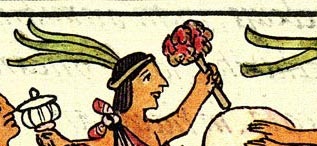
Matlaccohuatl was the third Tlatoani (ruler) of Ecatepec, a Nahua altepetl.

The Baths of Chapultepec as a series of deposits used from the pre-Columbian period until the beginning of the 20th century, to houses the waters of the springs of the hill of Chapultepec that served to provide drinking water to Mexico City. Among the remains of these are the so-called Baths of Moctezuma in Chapultepec which was recently remodeled, and the remains of some colonial baths in the Well 5 or Manantial Chico of Chapultepec.